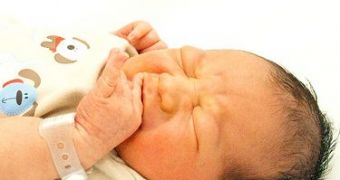A recent study shows that between infancy and young adult age, the brain's development is boosted up. It is almost like watching a display of human brains, from the beginning of their evolution until nowadays.
Study researcher David Van Essen of Washington University School of Medicine in St. Louis, found that the cerebral cortex, the part of the brain that gathers knowledge, does not grow in a constant way. It develops itself relatively slow until the infant is fully developed and it accelerates its growth until the child becomes a young adult. In this laps of time, scientists have observed that between one quarter and one third of the cortex doubles its size.
“Through comparisons between humans and macaque monkeys, my lab previously showed that many of these high-growth regions are expanded in humans as a result of recent evolutionary changes that made the human brain much larger than that of any other primate,” stated Van Essen.
The regions of the brain that boost up their size are responsible for advanced mental functions like reasoning, language and other specific human characteristics. A theory says that this late development might occur especially to allow these regions of the brain to incorporate one's personal experience.
Another reason for the “slow start” growth of the brain might also be childbirth. It would be far more difficult for a mother to give birth if her child's head would be twice the size, says study researcher Dr. Terrie Inder, professor of pediatrics at Washington University School of Medicine. As size does seem to matter, the new born brain must have its priorities straight. First of all, the child's vision must develop in order for him to see and recognize his parents. “Other areas of the brain, less important very early in life, may be the regions that see greater growth as the child matures” added Inder.
For this research, brain scans of 12 full-term infants and of 12 young adults, aged 18-24, were analyzed. Scientists put all data together and noted the differences between an infant's and a young-adult's brains. The study's results will be published in the journal Proceedings of the National Academy of Sciences, this week.

 14 DAY TRIAL //
14 DAY TRIAL //